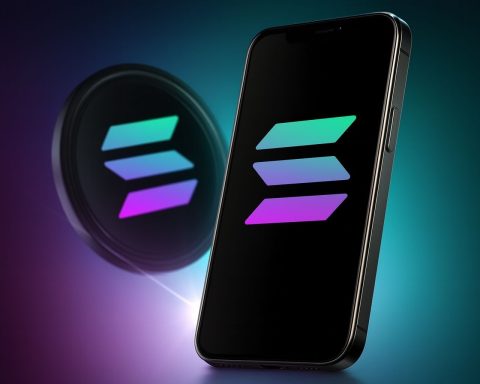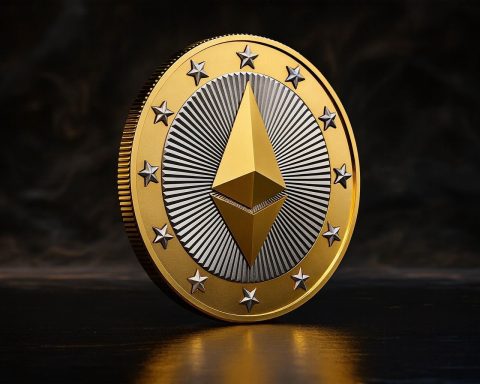Published: November 25, 2025
Australian entrepreneurs Martin Mao and Rob Skillington have clinched one of the biggest tech exits of the year, agreeing to sell their observability startup Chronosphere to US cybersecurity giant Palo Alto Networks in a deal worth about A$5.18 billion (US$3.35 billion). [1]
The blockbuster sale lands just days after a major Cloudflare outage on November 18 temporarily knocked out access to key internet services like ChatGPT, X, Spotify and Canva, highlighting exactly the kind of resilience and real‑time visibility that Chronosphere is built to deliver. [2]
At the same time, Palo Alto Networks has reported strong fiscal Q1 2026 results and raised its full‑year outlook, even as investors scrutinise the rich price tag and the company’s increasingly ambitious M&A strategy. [3]
Australian founders score A$5.18 billion Chronosphere exit
Chronosphere is an observability platform – software that helps large organisations track, analyse and troubleshoot the torrents of data coming from cloud‑native applications, microservices and AI workloads in real time.
According to Australian outlet SmartCompany, Palo Alto Networks has agreed to acquire the New York–based startup in a deal valuing it at A$5.18 billion (US$3.35 billion). [4]
Key details:
- Founders: Australians Martin Mao (UNSW) and Rob Skillington (University of Melbourne), who met while working in the US at Microsoft and later built Uber’s internal metrics platform. [5]
- Founded: 2019, headquartered in New York, with a growing presence in Australia. [6]
- What it does: Lets customers observe and analyse tens of millions of data points per second, turning noisy telemetry into actionable insights while cutting spending on unnecessary logs and metrics. [7]
- Customers: High‑scale digital and AI‑native brands including DoorDash, Snapchat, Commonwealth Bank, and reportedly leading AI players such as OpenAI. [8]
Major Australian business outlets, including The Australian Financial Review, note that the sale of Chronosphere to Nasdaq‑listed Palo Alto Networks ranks among the largest tech deals involving Australian founders this year, and a flagship win for the local startup ecosystem. [9]
The Cloudflare outage that set the stage
On 18 November 2025, a configuration error at internet infrastructure provider Cloudflare triggered one of the most disruptive outages in recent years. For several hours, users around the world struggled to access services including:
- ChatGPT
- X (formerly Twitter)
- Spotify
- Canva
- Multiple government and financial services websites in the UK and elsewhere [10]
Cloudflare’s own post‑mortem shows the problem started when an automatically generated configuration file for its Bot Management feature ballooned beyond expected limits, causing a critical proxy component to crash and returning waves of 5xx errors across its network. [11]
The incident:
- Began around late morning UTC on November 18
- Took several hours to fully resolve
- Was not caused by a cyberattack, according to Cloudflare’s leadership
- Was described internally as the company’s worst outage since 2019 [12]
Just one day after the outage, Palo Alto Networks announced its definitive agreement to acquire Chronosphere, which specialises in exactly the sort of deep, real‑time visibility into complex systems that can help prevent or mitigate these kinds of failures. [13]
The timing wasn’t lost on observers: industry commentary has framed the deal as part of a broader rush by enterprises to treat observability as core infrastructure, on par with security and networking. [14]
Inside the Palo Alto–Chronosphere deal
Palo Alto Networks says it will pay US$3.35 billion for Chronosphere, using a mix of cash and replacement equity awards. [15]
Key financial and strategic details:
- Chronosphere currently generates more than US$160 million in annual recurring revenue (ARR) as of September 2025, growing at triple‑digit rates. [16]
- The price tag implies a valuation of nearly 21× ARR, a rich multiple even by high‑growth SaaS standards. [17]
- The acquisition is expected to close in the second half of Palo Alto’s fiscal 2026, subject to regulatory approvals. [18]
Palo Alto plans to integrate Chronosphere into its Cortex AgentiX platform, using AI agents to move beyond dashboards towards “agentic remediation” – systems that don’t just alert on performance problems, but automatically investigate and fix them. [19]
In practice, that means:
- Chronosphere ingests and optimises vast streams of telemetry data from apps, infrastructure and AI workloads.
- Cortex AgentiX layers AI on top to detect anomalies, correlate events and propose or trigger remediation steps.
- Security data and performance data live in a single, unified platform, making it easier to understand whether an incident is a cyberattack, a configuration error or a cascading infrastructure failure. [20]
Palo Alto’s CEO Nikesh Arora has argued that “constant uptime and resilience” are now the baseline requirement for AI data centres, and that real‑time observability at the right cost is essential to meet that bar. [21]
Strong Q1 2026 earnings give Palo Alto room to spend
The deal comes on the heels of a solid quarter. For its fiscal first quarter 2026, which ended 31 October 2025, Palo Alto Networks reported:
- Total revenue: US$2.47 billion, up about 16% year‑on‑year
- GAAP net income: US$334 million (US$0.47 per diluted share)
- Non‑GAAP net income: US$662 million, or US$0.93 per diluted share, up from US$0.78 a year earlier
- Non‑GAAP operating margin: roughly 30.2%, an expansion of over 1 percentage point year‑on‑year [22]
Investing.com’s summary of the company’s earnings deck also highlights:
- Robust free cash flow, with adjusted FCF reportedly topping US$1.7 billion for the quarter
- Rapid growth in customers spending US$5–10 million+ annually on its next‑generation security (NGS) platform bundles
- Continued progress on “platformization” – consolidating multiple security tools into fewer, broader Palo Alto offerings [23]
On the back of these results and the Chronosphere announcement, Palo Alto raised its full‑year fiscal 2026 guidance to:
- Revenue: US$10.50–10.54 billion (vs. prior US$10.48–10.53 billion)
- Adjusted EPS: US$3.80–3.90 (vs. US$3.75–3.85 previously) [24]
That said, investors have been cautious. Reuters reports that Palo Alto’s shares dropped a little over 3% after the deal and outlook update, as the market digested both the Chronosphere price tag and the fact that the company is pursuing this acquisition while still working to close its US$25 billion CyberArk transaction. [25]
Why pay 21× ARR for observability?
On paper, paying roughly 21 times ARR for Chronosphere looks aggressive. But analysts and industry watchers point to several reasons Palo Alto may be comfortable with that multiple: [26]
- Observability is becoming mission‑critical.
After a string of outages at Cloudflare, AWS, Microsoft Azure and others, large enterprises increasingly see deep observability as a non‑negotiable layer of their stack, not a nice‑to‑have. Chronosphere focuses on high‑volume, cloud‑native environments, where traditional monitoring tools struggle. [27] - The AI angle.
Chronosphere is already used by “category‑defining AI‑native companies”, including at least two major LLM providers, according to Palo Alto. AI workloads are spiky, data‑hungry and intensely sensitive to latency – a perfect fit for a platform designed for real‑time, cost‑efficient telemetry. [28] - Security + observability convergence.
Security incidents increasingly blur with reliability issues: a misconfigured file, a third‑party outage or a genuine cyberattack can all look similar in the first minutes of a crisis. Combining security telemetry with observability data may make it easier for security operations centres (SOCs) to triage what’s really happening. [29] - Platform lock‑in and TAM expansion.
For Palo Alto, every additional function brought into its platform – identity (via CyberArk), observability (via Chronosphere), SOC automation, cloud security – expands its total addressable market and makes it harder for large customers to rip out pieces later. [30]
A watershed moment for Australian tech
For Australia’s startup community, the Chronosphere deal is more than just a headline number.
- It showcases how Australian‑trained engineers and founders can build globally significant infrastructure companies from overseas bases while still keeping strong ties to the local ecosystem. [31]
- Major Australian outlets have framed it as one of the biggest tech exits of the year, putting observability – a previously niche field – firmly on the radar of local investors and founders. [32]
- Early backers and employees are likely to recycle capital and expertise into new Australian ventures, typically fuelling a “second generation” of startups following a large exit. [33]
Chronosphere’s journey also tracks with a common pattern in modern infrastructure startups:
- Deep technical problem tackled inside a hyperscale company (in this case, Uber’s internal metrics platform, M3). [34]
- Founders spin out a commercial product addressing similar problems for other enterprises.
- Rapid growth in ARR and enterprise adoption, followed by acquisition by a large strategic buyer looking to consolidate the category. [35]
What it means for enterprises and CISOs
For CIOs, CISOs and engineering leaders, the combination of the Cloudflare outage, Palo Alto’s Chronosphere acquisition and its CyberArk deal sends a clear signal about where the market is heading:
- Resilience is now a board‑level issue. Outages that knock major global platforms offline for hours are no longer rare events. Boards are pressing leadership to reduce single points of failure, build multi‑cloud strategies and invest in tools that detect and fix issues before customers notice. [36]
- Security and reliability are converging. Operational incidents and security incidents often look identical at first. Platforms that fuse security analytics with performance telemetry are likely to become more common. [37]
- AI operations need AI‑grade observability. As organisations roll out LLMs and agents, traditional monitoring dashboards aren’t enough. Systems must track model performance, drift, latency, cost and safety in real time. This is exactly the space Chronosphere and Palo Alto say they want to dominate together. [38]
What investors will be watching next
For investors and market watchers, key questions now include:
- Regulatory and integration risk
- Can Palo Alto secure approvals and successfully close both the Chronosphere and CyberArk deals by the second half of fiscal 2026?
- How smoothly can it integrate a fast‑moving, developer‑centric observability startup into a much larger cybersecurity platform without slowing its innovation? [39]
- Margin and cash‑flow impact
- At a 20×+ ARR multiple, investors will be watching whether Chronosphere can keep growing at triple‑digit rates while contributing positively to Palo Alto’s already strong operating margins and free cash flow. [40]
- Competitive response
- Cloud and observability rivals – from Datadog and New Relic to hyperscalers’ own tools – may respond with deeper security integrations or their own acquisitions.
- Cloudflare’s outage is likely to add momentum to any vendor that can credibly promise more resilient, self‑healing infrastructure. [41]
As always, this coverage is informational, not financial advice. Anyone considering investing in Palo Alto Networks, Cloudflare, or related companies should do independent research and consider speaking with a licensed financial adviser.
Key takeaways
- Australian‑founded Chronosphere is being acquired by Palo Alto Networks for about A$5.2 billion (US$3.35 billion), in one of the year’s biggest tech exits for Aussie entrepreneurs. [42]
- The deal lands in the immediate aftermath of a major Cloudflare outage that underscored just how fragile and interconnected modern internet infrastructure has become. [43]
- Palo Alto is doubling down on AI‑driven security and observability, integrating Chronosphere’s telemetry platform with its Cortex AgentiX system and pressing ahead with a broader M&A strategy that also includes a pending US$25 billion CyberArk acquisition. [44]
- Strong Q1 2026 earnings and raised guidance give the company financial firepower, but investors are debating whether the premium price and deal sequencing are worth the risk. [45]
References
1. www.smartcompany.com.au, 2. www.ft.com, 3. www.prnewswire.com, 4. www.smartcompany.com.au, 5. www.smartcompany.com.au, 6. www.smartcompany.com.au, 7. www.smartcompany.com.au, 8. www.smartcompany.com.au, 9. www.afr.com, 10. www.ft.com, 11. blog.cloudflare.com, 12. blog.cloudflare.com, 13. www.pymnts.com, 14. www.pymnts.com, 15. www.paloaltonetworks.com, 16. www.paloaltonetworks.com, 17. www.reuters.com, 18. www.paloaltonetworks.com, 19. www.paloaltonetworks.com, 20. www.paloaltonetworks.com, 21. www.paloaltonetworks.com, 22. www.prnewswire.com, 23. www.investing.com, 24. www.reuters.com, 25. www.reuters.com, 26. www.reuters.com, 27. www.pymnts.com, 28. www.paloaltonetworks.com, 29. www.pymnts.com, 30. www.constellationr.com, 31. www.smartcompany.com.au, 32. www.afr.com, 33. www.smartcompany.com.au, 34. www.smartcompany.com.au, 35. greylock.com, 36. www.theguardian.com, 37. www.pymnts.com, 38. www.paloaltonetworks.com, 39. www.reuters.com, 40. www.prnewswire.com, 41. blog.cloudflare.com, 42. www.smartcompany.com.au, 43. www.ft.com, 44. www.paloaltonetworks.com, 45. www.prnewswire.com










